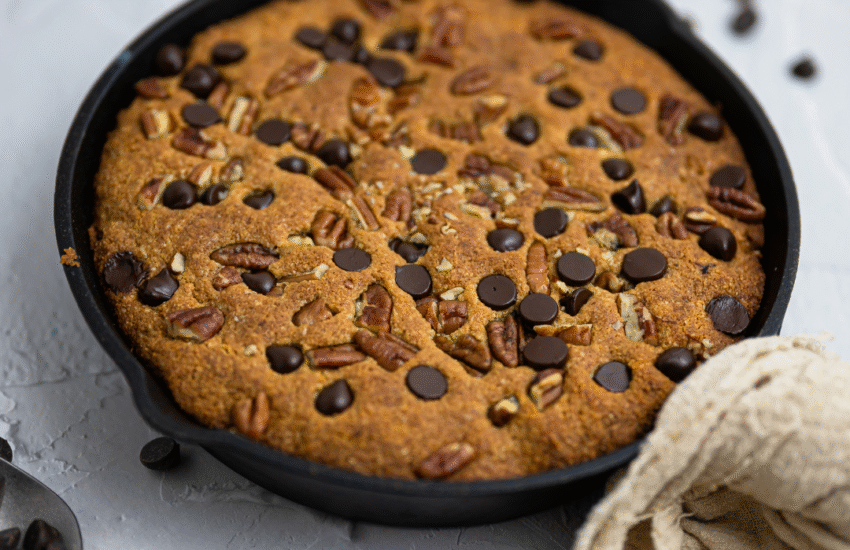How to Add Superfoods to Your Savory Dishes for Enhanced Flavor and Nutrition
Adding superfoods to savory dishes is a simple way to boost nutritional value without sacrificing flavor. Incorporating ingredients like quinoa, kale, or avocado into meals can enhance both health benefits and taste. Chefs and home cooks alike can transform regular recipes by creatively integrating these nutrient-dense foods.
Exploring various cooking techniques allows for diverse applications of superfoods. For instance, blending kale into pesto or tossing quinoa into salads can introduce new textures while packing a punch of vitamins. This approach not only diversifies the diet but also stimulates culinary creativity.
With a bit of experimentation, anyone can harness the power of superfoods to elevate their everyday meals. The journey to a healthier plate begins with understanding how to implement these ingredients effectively and deliciously.
Understanding Superfoods and Their Nutritional Benefits
Superfoods provide an increased level of nutrition, contributing significantly to health and well-being. They are packed with beneficial compounds that support various bodily functions and can help prevent diseases.
What Qualifies as a Superfood?
A superfood is typically defined as a nutrient-rich food that offers numerous health benefits. They often include fruits, vegetables, whole grains, nuts, and seeds that contain high levels of vitamins, minerals, and antioxidants. Some common superfoods include:
- Blueberries: Rich in antioxidants and vitamins.
- Kale: High in fiber and vitamin K.
- Quinoa: A complete protein source.
These foods are considered nutrient-dense, meaning they provide a large amount of nutrition with relatively few calories.
Key Nutrients and Health Benefits of Superfoods
Superfoods are abundant in vital nutrients essential for health. Key components often found in these foods include:
- Vitamins, Such as A, C, and K, are crucial for immune function and skin health.
- Minerals: Elements like calcium and magnesium support bone health.
- Antioxidants: Compounds that help combat oxidative stress and inflammation.
Additionally, superfoods frequently contain fiber and protein, both important for digestive health and weight management. Healthy fats, such as omega-3 fatty acids found in flaxseeds and walnuts, further enhance their benefits and support heart health.
How Superfoods Support Well-Being and Disease Prevention
Incorporating superfoods into one’s diet can positively influence various aspects of health. They play a role in:
- Heart Health: Nutrient-dense foods can lower cholesterol levels.
- Immune System: Antioxidants and vitamins strengthen the immune response.
- Cognitive Function: Omega-3-rich foods may enhance brain health.
The anti-inflammatory properties of many superfoods can reduce the risk of chronic diseases. Their nutrient density makes them key players in maintaining wellness and supporting long-term health goals.
How to Incorporate Superfoods Into Savory Dishes
Incorporating superfoods into savory dishes enhances both flavor and nutrition. From leafy greens to omega-3-rich ingredients, there are numerous ways to elevate everyday meals.
Adding Leafy Greens and Cruciferous Vegetables
Leafy greens like spinach and kale are versatile superfoods that can be added to a variety of dishes. They can be lightly sautéed with garlic and olive oil and served alongside proteins. Additionally, blended into smoothies, they complement flavors in soups or stews.
Cruciferous vegetables, such as broccoli and Brussels sprouts, provide significant health benefits. Roasting them with olive oil, salt, and pepper can bring out their natural sweetness. They can also be incorporated into stir-fries or grain bowls, delivering fiber and vitamins efficiently.
Enhancing Flavor and Nutrition with Superfood Powders and Spices
Superfood powders like spirulina, matcha, or maca can easily enhance the nutritional profile of savory dishes. A teaspoon of spirulina can be mixed into salad dressings or blended into sauces for an added nutrient kick.
Spices such as turmeric and ginger not only add flavor but also offer anti-inflammatory benefits. Mixing turmeric into rice dishes or lentil soups adds both color and nutrition. Fresh herbs like basil or cilantro can be sprinkled on top for a freshness boost.
Boosting Meals with Omega-3–Rich Ingredients
Incorporating omega-3-rich foods like salmon or chia seeds is vital for optimal health. Grilled salmon served with a side of quinoa and sautéed vegetables makes a well-rounded meal. The healthy fats in fish promote heart health and provide essential nutrients.
Chia seeds can be sprinkled into salads or incorporated into baked goods. They add a crunch and are a good source of protein and fiber. Flax seeds can also be used similarly, providing additional omega-3 fatty acids for various savory dishes.
Utilizing Legumes, Grains, and Seeds for Balance
Legumes such as lentils, beans, and chickpeas are excellent sources of protein and fiber. Adding black beans to a quinoa salad can create a filling, nutrient-dense meal. Stewing chickpeas with spices and tomatoes offers a flavorful dish packed with vitamins and minerals.
Seeds like hemp and sesame can provide healthy fats and a nutty flavor. Sesame seeds can top stir-fried vegetables or salads, while hemp seeds work well mixed into dressings. Incorporating whole grains such as quinoa promotes energy while balancing the meal’s nutritional value.
Savory Recipe Ideas Featuring Superfoods
Incorporating superfoods into savory dishes can enhance flavor and boost nutrient density. This section presents specific recipes that integrate these powerhouse ingredients in soups, salads, main dishes, and sauces.
Soups, Stews, and Broths with Nutrient-Dense Ingredients
Soups and stews are perfect for adding superfoods due to their versatile nature. A bean and spinach soup can serve as an excellent base. It combines cooked lentils, chickpeas, and spinach, simmered in vegetable broth for rich flavor.
For a twist, a sweet potato and tomato stew can showcase the nutritional benefits of sweet potatoes. They should be diced and cooked with garlic, onions, and diced tomatoes. Adding fresh herbs like basil or parsley enhances both flavor and nutritional value.
Salads and Grain Bowls with Superfood Toppings
Salads can be easily upgraded with superfood ingredients. A quinoa salad can be dressed with olive oil and lemon juice, then topped with roasted chickpeas and fresh spinach. This adds protein and fiber.
Grain bowls are adaptable and can include a mix of brown rice or farro. They can be enhanced with avocado, shredded carrots, and pumpkin seeds. Mixing in fresh herbs and a yogurt dressing brings a fresh taste while also adding nutrient density.
Hearty Main Dishes and Protein-Rich Options
Main dishes can shine with the addition of superfoods. A lentil and vegetable casserole can include layered sweet potatoes, providing a hearty meal. Combine it with roasted vegetables for added flavor.
Vegetable stir-fry with quinoa can include broccoli, bell peppers, and edamame. Toss with a sauce made from olive oil, garlic, and soy sauce for a nourishing and colorful plate. This dish is rich in protein and essential nutrients.
Innovative Sauces, Spreads, and Sides
Sauces can transform a dish by adding flavor and health benefits. A chickpea spread can be made by blending chickpeas with garlic, tahini, and lemon juice. This is excellent with whole grain bread or as a dip for vegetables.
For a unique twist, consider a tomato and spinach sauce for pasta. Cook down tomatoes with garlic and add sautéed spinach for extra nutrients. This sauce complements many dishes while delivering essential vitamins.
Practical Tips for Maximizing Nutrition in Everyday Cooking
Incorporating superfoods into savory dishes can significantly enhance their nutritional value. By employing effective meal prep strategies and understanding how to choose and store fresh ingredients, individuals can boost their meals’ health benefits.
Meal Prep Strategies for Busy Lifestyles
Meal prep is essential for maintaining healthy eating habits. Preparing meals in advance allows for better control over ingredient choices and portion sizes.
- Plan Weekly Menus: Outline a menu for the week, focusing on nutrient-dense ingredients like leafy greens and legumes.
- Batch Cooking: Cook large portions of grains, proteins, and vegetables on weekends to create a base for various meals. This saves time during busy weekdays and ensures balanced nutrition.
- Use Versatile Superfoods: Incorporate items like Greek yogurt, nuts, and seeds that can be added to multiple dishes for added nutrition.
Having ready-to-eat options can reduce reliance on less healthy snacks, aid in digestion, and support energy levels.
Choosing and Storing Fresh, Quality Superfoods
Selecting high-quality superfoods is crucial for maximizing nutrition. Fresh ingredients retain more vitamins and minerals, which contribute to overall health.
- Seasonal Produce: Opt for fruits and vegetables that are in season. They are usually fresher and more flavorful, providing better nutrient profiles.
- Storage Techniques: Proper storage is vital. Dark, cool places are ideal for storing items like nuts and seeds, while leafy greens and citrus fruits do well in the refrigerator.
- Fermented Foods: Include options like kimchi or sauerkraut, which are rich in probiotics. These promote gut health and enhance digestion.
Ensuring that superfoods are properly sourced and stored helps preserve their nutrient density.
Combining Flavors for Delicious, Nutrient-Rich Meals
Flavorful meals can be both enjoyable and nutritious. Combining different superfoods can enhance taste without compromising health benefits.
- Healthy Fats: Incorporate sources of omega-3s, such as flaxseeds or fatty fish, into salads or grain bowls. These support skin health and lower oxidative stress.
- Zesty Additions: Use citrus fruits like lemons or limes to brighten up dishes. Their vitamins C and antioxidants bolster the immune system.
- Flavorful Snacks: Create nutritious snacks by mixing Greek yogurt with honey and fresh fruits. This combination is not only delicious but also aids in digestion and energy levels.
By focusing on taste and nutrition, meals can become both satisfying and health-promoting.



